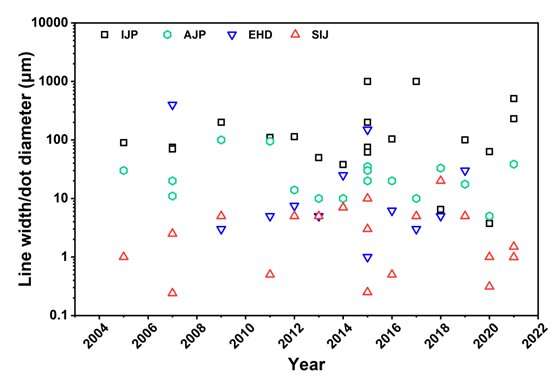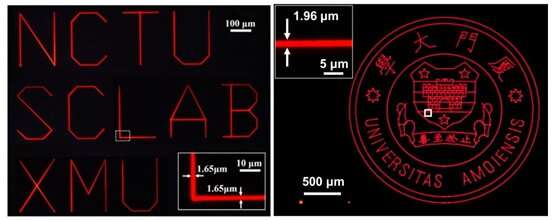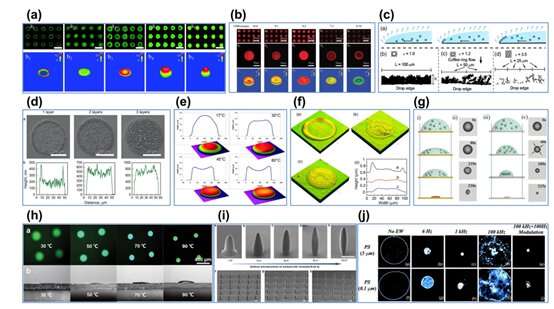The principle of inkjet printing and its applications on AR/VR micro-displays

With the rapid development of artificial intelligence, image recognition and 5G communication technology, augmented reality (AR) and virtual reality (VR) technologies are developing at an alarming rate. Under the background of the COVID-19, the remote office and consumption interaction are increasing. The market once again turns its attention to AR/VR and increases its investment in technology applications.
One of the main reasons for the outbreak in the market is the breakthrough of new display technology with excellent performance. As the basic element of AR/VR, display devices should have ultra-high pixel density and fast refresh speed in addition to lightweight and small volume. At present, liquid crystal display (LCD) and organic light-emitting diode (OLED), two mainstream display technologies, have been applied to near-eye displays (NEDs) and head-mounted displays (HMDs). However, due to the low conversion efficiency and color saturation, fast aging and short life, the development of new display technology has been accelerated.
Micro-LED has excellent optical performance and long life, which is considered as the next generation and ultimate display technology. The minimum pixel size reaches tens of microns, and high pixel density makes it adapted for AR/VR. In addition to high pixel density, full color is also the key element to realize Micro-LED in AR/VR and the color conversion scheme is an effective method. Quantum dots were deposited on blue or ultraviolet micro-LED chips by inkjet printing technology to achieve three-color luminescence while avoiding mass transfer technology. In recent years, inkjet printing technology shows great potential in microfabrication due to its advantages of digitalization, patterning, additive manufacturing, low waste of material, and large-area printing. In particular, the emergence of super inkjet (SIJ) printing technology can achieve ultra-high-resolution printing with the minimum line width of printing falling in the sub-micrometer region. It sheds light on the fabrication of high-resolution color conversion layer for micro-LED to realize full-color display, and in specific, for the augmented/virtual realities (AR/VR).
The authors of this article published in Opto-Electronic Advances overview the principle of the inkjet printing technique and its application on micro-display for AR/VR. In this review, the progress of AR/VR technologies is first introduced, followed b
Micro-LED has excellent optical performance and long life, which is considered as the next generation and ultimate display technology. The minimum pixel size reaches tens of microns, and high pixel density makes it adapted for AR/VR. In addition to high pixel density, full color is also the key element to realize Micro-LED in AR/VR and the color conversion scheme is an effective method. Quantum dots were deposited on blue or ultraviolet micro-LED chips by inkjet printing technology to achieve three-color luminescence while avoiding mass transfer technology. In recent years, inkjet printing technology shows great potential in microfabrication due to its advantages of digitalization, patterning, additive manufacturing, low waste of material, and large-area printing. In particular, the emergence of super inkjet (SIJ) printing technology can achieve ultra-high-resolution printing with the minimum line width of printing falling in the sub-micrometer region. It sheds light on the fabrication of high-resolution color conversion layer for micro-LED to realize full-color display, and in specific, for the augmented/virtual realities (AR/VR).
The authors of this article published in Opto-Electronic Advances overview the principle of the inkjet printing technique and its application on micro-display for AR/VR. In this review, the progress of AR/VR technologies is first introduced, followed by the discussion of the adaptability of micro-LED display technology in AR/VR and the advantage of printing color conversion layer for micro-LED by inkjet printing technology. The non-radiation energy transfer mechanism and the influence of color conversion layer thickness on color conversion efficiency are discussed. The advantages of SIJ over other printing technologies in resolution are introduced.
In the second part, the printing principle of various inkjet printing technologies, as well as two key issues—the optimization of ink rheological parameters and the reduction of coffee-ring effects, were introduced. The rheological parameters of ink suitable for each printing technology and the influence of rheological parameters on the printing effect were introduced. Two solutions to the caffeine ring effect and specific improvement methods were reviewed. Finally, some potential problems associated with the color conversion layer are highlighted, including light crosstalk, blue light absorption and self-absorption effect. This review article serves as a reference for the areas of inkjet printing technologies, micro-LED full colorization and its application in AR/VR.
-

Fig. 2 Letters and XMU emblem printed by SIJ. Credit: Compuscript Ltd -

Fig. 3 Research on suppressing the coffee-ring effect. Credit: Compuscript Ltd
More information: Xiao Yang et al, An overview on the principle of inkjet printing technique and its application in micro-display for augmented/virtual realities, Opto-Electronic Advances (2022). DOI: 10.29026/oea.2022.210123
Provided by Compuscript Ltd





















